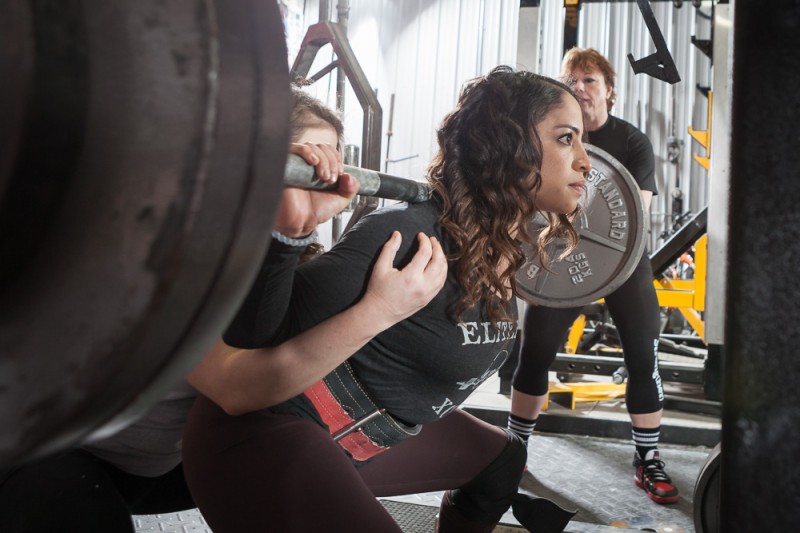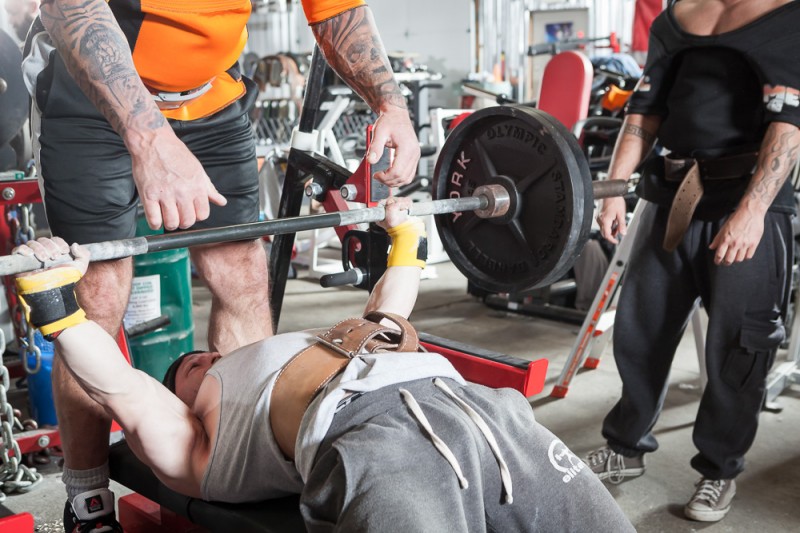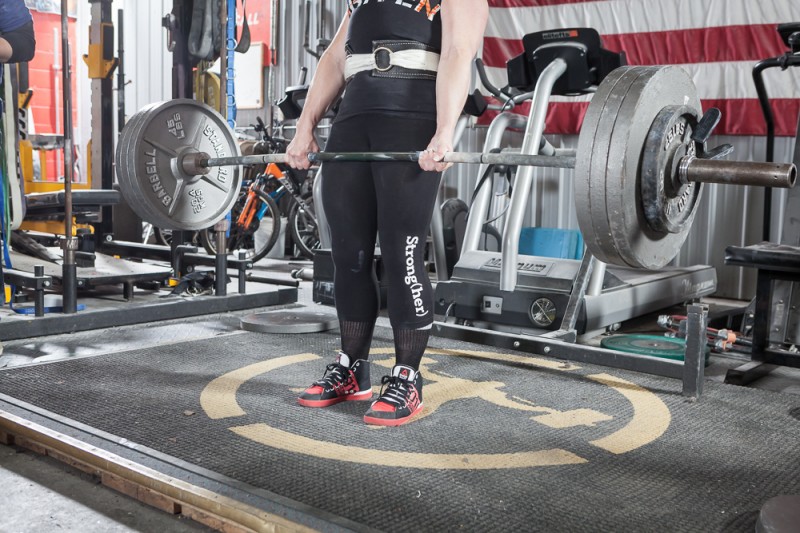
Introduction
Should you load a stable joint?
Lately, a handful of coaches and lifters have been saying that loading the low back into flexion and extension is a bad idea because the lower back is a stable joint. One of the comments are: “Loaded spinal flexion and extension of a stable joint, real good idea, huh?” Initially seeing this can lead you to believe that you shouldn’t load a stable joint.
I’m here to present the case that you should load your stable joints; otherwise, how will you increase its stability? But I’ll get to that.
RECENT: 16-Week Beginner Conjugate Program
In my experience, the lower back being labeled a stable joint initially came from physical therapist Gray Cook and coach Mike Boyles in what they called the joint by joint (JBJ) approach. I think it was a byproduct of Cook’s functional movement screen. It was developed as a way to help to identify each of the major joints in the body, how they should ideally function, and what types of dysfunctions we will commonly see at these joints and at the joints around them. In the early stages of my career, I thought the approach was amazing. I still think it’s a great way for beginners to learn and understand joints along with the human body. I’m on board for making complex concepts simple, but the problem I began to see as I’ve advanced in my career is that it’s too simple, and when it comes to the human body and movement, there is nothing simple about it.
If you don’t know what the joint-by-joint approach is, it’s as follows and describes the ideal function of each of the major joints:
- Ankle - mobile
- Knee - stable
- Hip - mobile
- Lumbar spine - stable
- Thoracic spine - mobile
- Shoulder - mobile
- Lower cervical - stable
- Upper cervical - mobile
Tiny Rant: They leave out the pelvis, which I’m not sure why. Maybe because it makes this simple model more complex? When we talk about core stability, I swear we just talk hips and lower back, but the majority leave the pelvis—you know, the structure connecting the lower back and hips.

A lot of clients I encounter lack pelvic stability and mobility. Most athletes have poor pelvic mobility and stability, and this is the root cause of a lot of their problems. We will save this topic for another article.
Define Stability and Mobility
Stability doesn’t mean to be able to hold a position, and I think this is where many get confused. Stability is the ability for a joint or joint system to control movement in the presence of potential change.
Mobility is the amount of active usable motion a joint possesses that YOU can control. Can you actually use the motion that the joint has?
Imagine not having stability in your mobile joints and not having mobility in your stable joints. Joints aren’t simple structures. One joint isn’t simply a stable joint, and the other isn’t simply a mobile joint. Here are some examples.
The thoracic spine is listed as a mobile joint. Just what I want during a heavy squat—a super mobile upper back. Wait—wouldn’t you want this to be stable?
The knee is a stable joint; it flexes and extends like the lower back. Should we not load it then? Oh, wait, you would want mobility in the knee to reach depth in a squat. The elbow is a stable joint; it flexes and extends. Should we not load it? Well, sorry, bros—no biceps and triceps for you.
How many of you have actually seen an unstable knee or elbow? I know I haven’t. I’ve seen athletes’ knees touch during jumping and landing, and I never thought to myself, “Oh, hey, they need knee stability.” It’s more along the lines of we need to strengthen the hips along with the muscles connecting to the knee above, below, and around it. So, an unstable knee outside of an acute injury, such as damage to the ligaments or tendons, we would strengthen the glutes, hamstrings, quads, adductors, calves, etc.
Someone told me I just don’t understand the concept. I do understand the concept—I just don’t think it’s a good concept. The way many see this concept is that stability will take precedence over mobility at certain joints to move, and mobility will take precedence over stability in certain joints. Although this isn’t necessarily wrong, I don’t think it’s right. I argue that it depends on the movement that a joint exhibits, and all joints need varying degrees of both.
Try standing on one foot without having a stable hip/knee/ankle. Many will shake all over the place. Now, try squatting all the way down without having mobility in the hip/knee/ankle. Different movements, same joints, different qualities required.

Do you see why saying you shouldn’t load a stable joint in the range of motion it’s meant to move in has the potential to be wrong? This approach, in my opinion, doesn’t work. It’s too simple, and movement is too complex. What happens when a joint doesn’t have the ability to control movement in the presence of potential change or isn’t strong through its full range of motion, or what happens if it is exposed to ranges of motion where it’s not strong? Typically, injury to some degree. When it comes to the body in this case, injury is the body’s inability to adapt to the force that was imposed upon it.
TL:DR
Stability is how well you can control the range of motion a joint has (mobility) in the presence of change. If you can’t control it, then you are setting yourself up for possible injury.
Fun fact: A lot of times one might have mobility issues in a joint because the joint lacks stability, so the brain will subconsciously limit the mobility of the joint to prevent you from injuring it. The body just doesn’t think it’s safe in these positions. Another fun fact: You can’t have distal mobility without proximal stability.
Back to the column.
The Lower Back
Now I want to talk about the lower back, as I feel there is confusion here, and it’s what prompted this column. To really understand the function of something, you must understand its structure. And to understand the structures of the lower back, you must look at the joints, facet orientation, vertebrae, muscles (actions of those muscles), tendons, ligaments, etc. Nobody is here for an anatomy lesson, and it is outside of the scope of this article. The thing is, if the body wasn’t meant to do it, why would it do it? You’ve heard statements like “knees shouldn’t go over the toes,” “you shouldn’t round your back,” etc. Well, if the body moves in such a way, then why shouldn’t we do it? And even more so, why shouldn’t we strengthen it?
RELATED: Are Bands a Bad Idea for Rotator Cuff Strengthening?
Every joint has a full range of motion, and this range of motion is typically dictated by its structure. This range of motion has an end range. If you don’t move in this full range, we will begin to lose it. There are several studies and guidelines out there that show the range of motions of the spine at its various segments (C/T/L-spine). The average range of motion for a healthy adult at the lower back is 40-60 degrees of flexion, 20-35 degrees of extension, 15-25 degrees of lateral flexion, and 3-18 digress of rotation. That’s a lot of degrees of freedom that we are telling people, not load and strengthen. Why wouldn’t we want to load/strengthen/stress this stable joint in its full range of motion?
Wouldn’t we want to maintain the full range of motion of a joint and strengthen this range of motion so that when we are in a situation where we need to express stability, we are actually stable? Look, I get it: Squatting is an up-and-down, sagittal-plane motion, but what happens when you flex or extend one degree with a heavy weight on your back but you’ve never strengthened this one degree? Now what happens when this one degree is what causes the injury? And if we return to our definition of injury, the issue wasn’t strong enough to withstand the force put upon it. I feel that a large number of injuries occur when we don’t expose our joints to their full ranges and aren’t strong in the end ranges.

Closing
You’re human, you’re meant to move, and you have joints, muscles, tendons, ligaments, and many other structures that truly love movement, especially in their full ranges. They like to move often, and when you don’t utilize them in the manner in which they were intended to move, that is when we often see injuries occur.
A study showed that most individuals use a relatively small percentage of their full range of motion when performing daily activities. Wonder why you hurt your back going to tie your shoes? Because you’re not in the range of motion enough, and when you ask your body to go there, it’s like whoa, what are you doing? We don’t do this whole spinal flexion and extension thing.
If you don’t train your joints in their full ranges and end ranges of motion, you will lose these ranges of motion over time. I’ve repeated this several times, as I believe that it’s important. Move your joints in their full ranges, control this movement, and strengthen this movement. Most of you lack a full range of motion to begin with (just because you have a full-range-of-motion squat doesn’t mean you have a full-range-of-motion hip.) When our joint capsule space decreases, you will essentially have less tissue available for adaptation and fewer degrees of freedom in your movement.
Do you honestly think it’s a good idea to keep loading heavy weight onto your joints but continuously have less space in the joint?
Use it or lose it.
Or should I say, move it or lose it?
Question Everything
I encourage you to answer the following questions:
Does the body actually move in a linear fashion? How important is the golden ratio in human movement? Why are our joints laid out the way they are? Why are the hips and shoulders ball and socket joints, and the knees and elbows hinge joints? Why is the body arranged like this? How does the body actually use this layout? Why do our joints go from more to fewer degrees of freedom?
Questions? Ask below in the comments section.
Header image credit: Naveen Kalwa © 123rf.com










